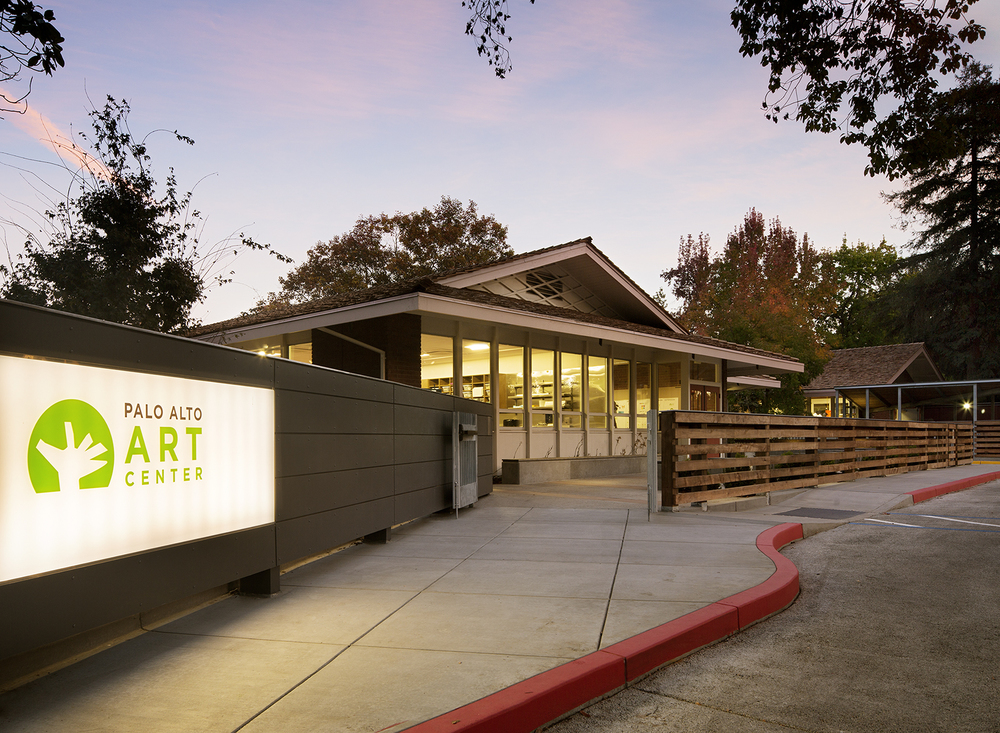By Mardi Maxwell
(Continued from: Engaging Senior Audiences- Part I: Community Profile)
At a time when the arts face new challenges, organizations are trying out new ways to increase and diversify their audiences. The Palo Alto Art Center (PAAC) recognized that building a senior audience took looking inside their programming and operations and ‘outside their four walls’ to create meaningful partnerships, participate, and listen to the community and generally embody the spirit of being a good neighbor (Culture Connects All, 2011).
In the spring of 2015, John F. Kennedy University Museum Studies graduate students, Betsy Ringrose, Christina Samore and Mardi Maxwell completed the second portion of Professor Margaret Kadoyama’s two-part communities assignment on behalf of PAAC. With their senior community profile in hand, the students created a community involvement action plan that involved the Palo Alto senior community with PAAC.
The overarching goal of the proposed Community Action Plan provided PAAC with the goals and strategies to develop and sustain a relationship with the Palo Alto senior community. Other museums can apply this research as methods to engage senior audiences.

Marketing and Publicity
- Increase awareness of the museum within senior communities
Seniors need to receive information via multiple modes (posters, mailboxes, email, website, newspaper ads, personal engagement & reminders). A way to address this need is through bulletin boards at senior communities, email blasts, newspaper ads, and rack cards.
- Build long-term relationships with residential retirement communities
Museums should communicate with administrators, program directors, and resident association leaders on an ongoing basis to plan senior outings and distribute exhibition information.
- Develop partnerships with senior centers that serve seniors
Senior centers allow museums to reach a greater senior audience, and provide valuable programming support.
Exhibitions
- Incorporate strategies to learn more about the interests of seniors in exhibitions and programming, considering those voices in programming decisions
Museums should research and survey seniors to find out what kinds of exhibitions seniors are interested in.
- Establish a reciprocal relationship between the institution and residential retirement communities
Museums should get involved with resident exhibits at retirement communities.
Public Programs
- Offer programs that appeal to seniors
Introduce your institution to seniors by visiting their community, presenting a lecture, and getting resident feedback.
- Implement unique maker activities tailored to seniors
Design meaningful activities where every participant will have success, and increased confidence as makers.
- Create stewardship strategy for older adults
Continue to engage seniors with special invitations to member events, exhibition openings, and family days.
Accessibility and Inclusion
Senior guests should be welcomed to your museum in the same way you would welcome a guest into your home. Since seniors are concerned about transportation, consider working with resident associations or directors to coordinate tours so they can facilitate the transportation process. Docents should be trained to tour senior audiences making them as welcome and comfortable as possible. Museums need to provide plentiful and comfortable seating as well as wheelchairs for those who need them. And guides should be mindful of seniors’ fine motor skills and mobility concerns.
Engagement Challenges
Museums are faced with an ongoing challenge how to engage target audience groups without alienating other audience groups. When engaging the senior audience, the organization should consider how other audiences receive their actions and services. Additionally, they should ensure they are not drifting from their mission by focusing exclusively on this single audience segment. Through strategic customer experience management strategies museums can connect with seniors, create more engaging customer experiences and retain existing audiences.
Outcomes
The potential for engaging seniors is well worth the effort. Seniors are vibrant, interesting, and seek opportunities for learning. A Senior Community Engagement Action Plan offers strategies to make your museum the destination where seniors can feel connected and part of your community. Within this social structure, reciprocal relationships will foster long-term friendships resulting in greater financial commitment and participation.
The outcome of an action plan designed for seniors will result in several advantages for your institution. Museums can benefit from new members, donors, and class takers. There will be increased attendance at events, exhibitions, and other programs. The senior and lifelong learner community will recognize your museum as a way to connect to the community. In looking towards the future, your museum will be served well by this senior audience, as the success of this one-generation can bring in other generations.
References:
Culture Connects All: Rethinking Audiences at Times of Demographic Change, Partners for Livable Communities (2011), Washington, DC. Retrieved from: https://www.giarts.org/sites/default/files/Culture-Connects-All_Rethinking-Audiences-in-Times-of-Demographic-Change.pdf
Mardi Maxwell is a second year graduate student at John F. Kennedy University in Berkeley, CA. She is currently pursuing a MA degree with a dual focus in Education and Collections. Museum affiliations include San Jose Museum of Art, Triton Museum of Art and Oakland Museum of Aviation.








Add new comment